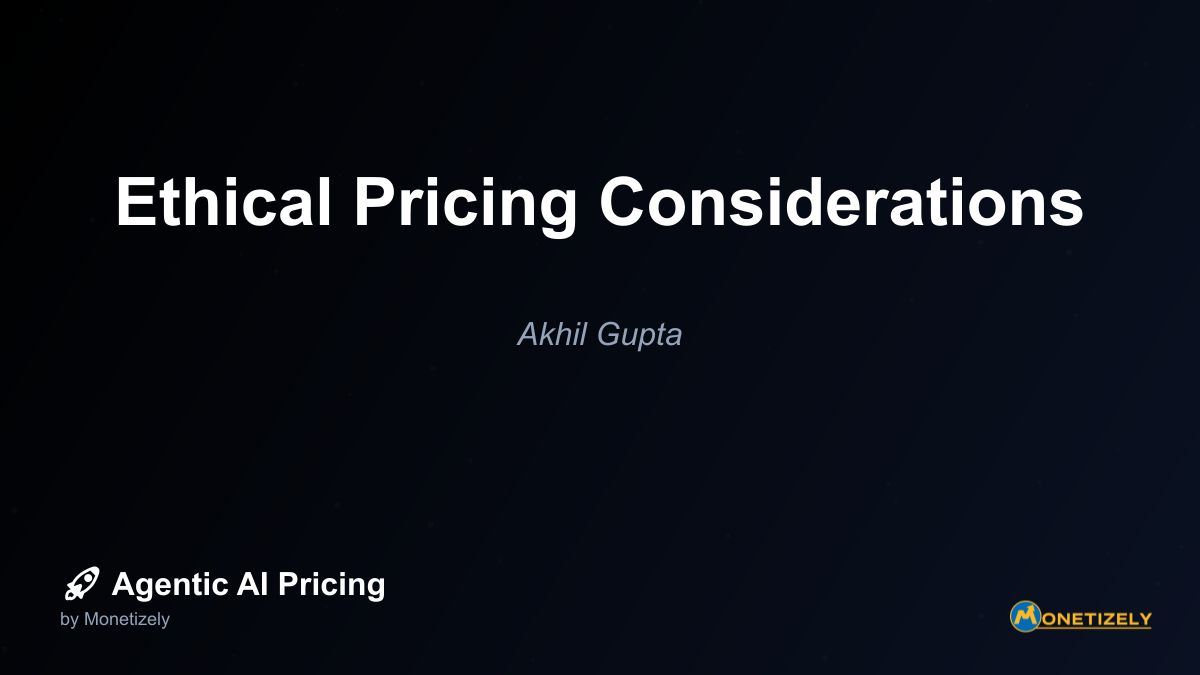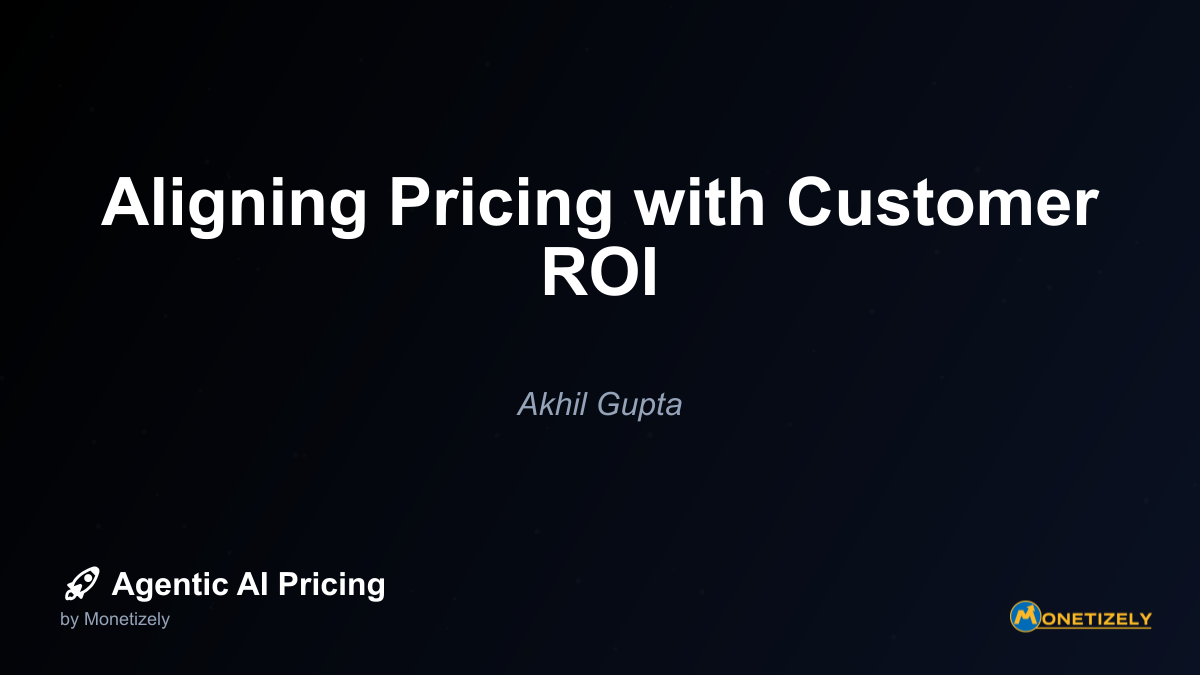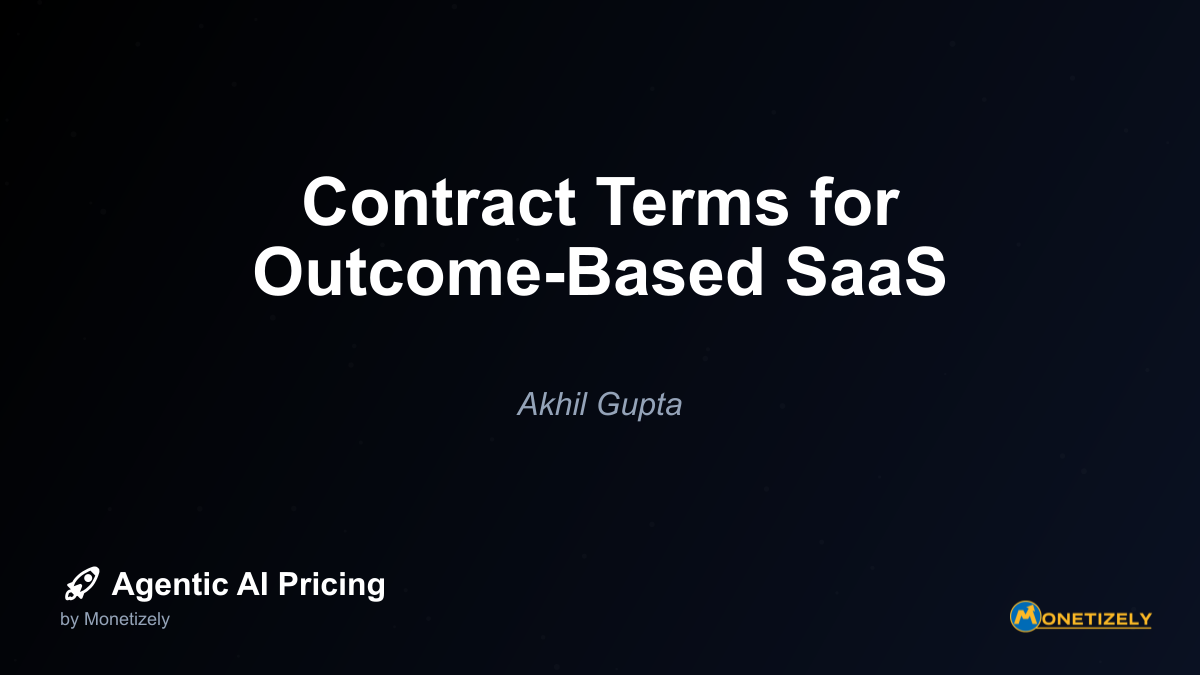· Akhil Gupta · Pricing Agentic SaaS Products · 13 min read
Ethical Pricing Considerations
AI and SaaS Pricing Masterclass
Learn the art of strategic pricing directly from industry experts. Our comprehensive course provides frameworks and methodologies for optimizing your pricing strategy in the evolving AI landscape. Earn a professional certification that can be imported directly to your LinkedIn profile.

In today’s rapidly evolving SaaS landscape, ethical pricing has emerged as a critical consideration for businesses deploying AI-powered solutions. As organizations increasingly leverage artificial intelligence to enhance their products and services, questions about fairness, access, and transparency have taken center stage in pricing discussions.
Ethical pricing isn’t merely a moral imperative—it’s becoming a strategic necessity. Companies that thoughtfully address these considerations build stronger customer relationships, mitigate regulatory risks, and establish sustainable competitive advantages. Yet balancing ethical concerns with business objectives presents complex challenges that require careful navigation.
This deep dive explores the multifaceted world of ethical pricing considerations in SaaS, examining how fairness, access, and transparency principles can be integrated into pricing strategies. We’ll investigate current market trends, regulatory perspectives, implementation frameworks, and future directions to provide a comprehensive guide for decision-makers navigating this critical aspect of modern business.
The Evolution of Ethical Pricing in SaaS
The SaaS industry has undergone significant transformation in its approach to pricing ethics. Traditional subscription models focused primarily on maximizing revenue through tiered feature access or per-seat pricing. However, as AI capabilities have advanced and become more integrated into SaaS offerings, the ethical dimensions of pricing have grown more complex.
Today’s ethical pricing conversation centers on three core principles:
- Fairness: Ensuring pricing structures don’t discriminate against or exploit certain customer segments
- Access: Providing reasonable pathways for diverse organizations to benefit from valuable technologies
- Transparency: Clearly communicating how prices are determined and what value customers receive
These considerations have gained prominence as AI-powered SaaS products raise new questions about value creation, resource consumption, and algorithmic decision-making. Companies must now navigate these waters carefully to maintain trust while building sustainable businesses.
Current Market Trends in Ethical SaaS Pricing
The SaaS industry is witnessing several significant trends that reflect growing attention to ethical pricing concerns:
AI-Driven Dynamic Pricing Models
By 2025, sophisticated AI algorithms are enabling real-time, personalized pricing based on customer usage patterns, market conditions, and predicted willingness to pay. This allows companies to tailor prices to perceived value, helping align cost with individual customer benefit. However, this approach raises concerns about fairness and transparency if not implemented with clear communication.
According to recent research, dynamic pricing models can improve revenue by 15-25% when properly implemented, but customer trust depends heavily on transparency in how these algorithms work. Companies must carefully balance the benefits of personalization with ethical considerations around potential discrimination or exploitation.
Value-Based and Outcome-Based Pricing
More SaaS companies are tying pricing directly to measurable business outcomes rather than simple usage metrics like user seats or feature access. This approach promotes fairness by aligning vendor and customer incentives and has been shown to improve customer retention and contract values by 15-20%.
For example, a marketing automation platform might charge based on the actual revenue generated through its tools rather than the number of campaigns created. This ensures customers pay in proportion to the value they receive, creating a more equitable relationship.
Usage-Based and Hybrid Pricing Models
Usage-based pricing, where customers pay based on actual consumption (API calls, data volume, user activity), has seen rapid growth with 61% adoption in some form reported. To maintain fairness, companies often combine this with base-tier flat or subscription pricing to reduce unpredictability and support users reaching value milestones.
This blend addresses concerns about cost transparency and access while reflecting true usage. Companies like Snowflake and Databricks exemplify this approach, charging primarily based on data processing while providing predictability through committed usage tiers.
Subscription with Tiered and Freemium Options
Subscription remains the dominant pricing model, often with tiered plans offering different levels of features and usage caps to cater to diverse customer segments. Freemium or free trials provide low-barrier access, improving fairness and allowing evaluation before commitment.
Nearly 80% of SaaS companies plan to use usage data to improve pricing transparency and customer experience. Clear communication about pricing drivers helps build trust and perceived fairness. However, frequent cost increases (around 10% annually for many vendors) need to be justified by added value to avoid perceptions of unfairness.
Unique Challenges in Pricing Agentic AI SaaS Products
Agentic AI—systems that can autonomously perform tasks on behalf of users—presents particularly complex ethical pricing challenges:
Variable and High Compute Costs
Agentic AI performs autonomous tasks that consume significant cloud and GPU resources, creating unpredictable operational costs for providers. Unlike traditional SaaS, marginal cost scales sharply with usage, complicating fixed or per-seat pricing models. Providers face risks of margin erosion while customers risk bill shocks if usage spikes suddenly.
This dynamic fundamentally changes the economics of SaaS pricing. As one industry expert noted, “The days of near-zero marginal cost SaaS are over for AI-powered products. We need new pricing paradigms that reflect the real resource consumption while maintaining fairness and predictability.”
Outcome- or Performance-based Pricing Complexities
Pricing for agentic AI increasingly shifts to value or outcomes (e.g., tasks completed, business KPIs improved) rather than access or seats. However, defining fair, measurable, and consensus-driven performance metrics is difficult. Attribution of AI’s direct impact amid complex business contexts requires sophisticated analytics and sometimes third-party validation to prevent gaming or disputes.
Companies like Intercom and Salesforce are early adopters shifting toward pricing based on AI work done (e.g., tickets resolved) rather than seats, highlighting the industry move toward outcome-centric pricing.
Revenue Predictability and Cash Flow Risks
Performance-based models introduce revenue variability for providers, demanding robust financial planning and possibly transitional hybrid pricing approaches combining fixed and performance elements. This creates tension between ethical pricing goals and business stability needs.
Monetizely’s Guide (2025) emphasizes balancing fixed and usage-based components to address unpredictability and maintain fairness, recommending that companies “create a floor for predictable revenue while allowing upside through performance-based components.”
Evolving Pricing Paradigms
Traditional seat-based or static pricing is often obsolete for agentic AI. Industry experts recommend a “pricing maturity curve” moving from basic activity metrics toward workflow- or outcome-based pricing aligned with AI delivering human-equivalent value, but this evolution brings implementation and fairness challenges.
Ethical Frameworks for SaaS Pricing
Several ethical frameworks can guide SaaS pricing decisions:
Value-Based Pricing
Firms set prices according to the value delivered to customers rather than internal costs, enhancing perceived fairness and retention. About 78% of SaaS companies use value-based pricing in 2025, up from 62% in 2023, indicating a strong shift toward ethical pricing that aligns with customer benefits.
This approach focuses on understanding and measuring the actual business impact of the software, then pricing accordingly. It requires deep customer understanding and ongoing value assessment.
Transparency and Explainability
AI-powered pricing decisions should be explainable and transparent to customers. This means providing clear documentation of how prices are determined, what factors influence pricing, and how customers can optimize their costs.
According to Gartner, 82% of SaaS buyers compare at least three vendors before purchasing, demonstrating a demand for transparent, fair pricing. Companies that excel in transparency often gain competitive advantage through increased trust.
Fairness and Non-Discrimination
Pricing models should be regularly audited for potential bias or discriminatory effects. This includes ensuring that algorithms don’t inadvertently penalize certain customer segments based on irrelevant characteristics.
A comprehensive bias testing framework includes:
- Regular algorithmic audits
- Diverse training data
- Human oversight of pricing decisions
- Customer feedback mechanisms
- Third-party validation
Accessibility and Inclusion
Ethical pricing should consider how to make products accessible to a diverse range of customers, including smaller organizations, nonprofits, educational institutions, and businesses in developing economies.
Tiered pricing, regional pricing adjustments, and special programs for underserved sectors can all contribute to more inclusive access while maintaining business viability.
Regulatory Perspectives on Ethical Pricing
Regulatory approaches to ethical pricing vary significantly by region:
United States
The U.S. emphasizes data privacy (CCPA), fair pricing, transparency, and non-discriminatory AI use. AI pricing algorithms require responsible data use and explainability to maintain market trust. The focus is on avoiding bias and ensuring AI pricing is accurate, competent, and reliable.
Industry often leads self-regulation with best practices around Responsible AI and compliance, though federal regulation may increase in coming years.
European Union
The EU places strong emphasis on data protection (GDPR), algorithmic transparency (AI Act), and ethics in AI deployment. The AI Act mandates transparency, risk management, and human oversight for AI-driven decisions, including pricing.
AI pricing models must be explainable, audited regularly, and demonstrate fairness. Accountability frameworks and human-in-the-loop principles are enforced. Projects such as NIST xAI principles influence EU practices.
Asia
Asian countries combine early-stage AI governance with focus on algorithmic transparency, data security, and social equity. Regulatory approaches vary by country:
- China’s Guidelines on AI Ethics promote fairness and transparency
- Singapore’s Model AI Governance Framework emphasizes explainability and fairness
- Japan encourages responsible AI through self-regulation and guidelines
Businesses operating in these regions are encouraged to disclose AI pricing mechanisms and ensure fairness and privacy.
Implementing Ethical Pricing: A Step-by-Step Approach
Organizations seeking to implement ethical pricing can follow this comprehensive framework:
1. Define Ethical Principles Specific to Your SaaS
Start by drafting guiding principles focused on transparency, fairness, value, and inclusion. Include data privacy and anti-discrimination explicitly in your pricing ethics statement. These principles should align with your company values while addressing the specific ethical considerations relevant to your product and market.
2. Map Customer Segments and Usage Patterns
Analyze diverse customer needs and economic backgrounds to understand how your pricing might affect different segments. Identify potentially vulnerable or underserved segments that might require special consideration in your pricing approach.
This process should include:
- Detailed customer segmentation analysis
- Usage pattern identification across segments
- Value perception research
- Economic impact assessment of pricing models on each segment
3. Choose or Design a Pricing Model
Select a pricing model that aligns with your ethical goals while supporting business sustainability. Options include:
- Flat-rate pricing
- Per-user pricing
- Tiered subscription models
- Pay-as-you-go or usage-based models
- Freemium approaches
- Outcome-based pricing
- Hybrid models combining multiple approaches
Incorporate value-based pricing elements based on feature usage and outcomes, ensuring prices reflect the actual value delivered to customers.
4. Build and Test Pricing Algorithms
If using AI-driven or dynamic pricing:
- Use diverse datasets to train AI pricing models
- Conduct bias and fairness audits regularly
- Document how AI arrives at price recommendations transparently
- Test algorithms with diverse customer scenarios
- Implement human oversight for algorithmic decisions
5. Implement Transparency Measures
Provide customers with clear explanations of pricing logic through:
- Transparent pricing pages
- Interactive pricing calculators
- Clear documentation of value metrics
- Regular communication about pricing changes
- Usage dashboards showing consumption and costs
Publish ethical guidelines or disclosures regarding AI involvement in pricing decisions.
6. Establish Governance and Oversight
Create formal governance structures to maintain ethical pricing:
- Establish an AI ethics advisory board or office
- Schedule ongoing reviews of pricing algorithms and outcomes
- Train internal teams on ethical standards
- Ensure human-in-the-loop for critical pricing decisions
- Create escalation paths for potential ethical issues
7. Roll Out Pricing with Customer Feedback Loops
When implementing new pricing approaches:
- Communicate changes clearly to customers
- Allow time and support for adaptation to new pricing
- Collect feedback through multiple channels
- Monitor customer satisfaction continuously
- Be willing to adjust based on feedback
8. Monitor and Measure Ethical Pricing Performance
Set metrics tied to fairness, customer trust, and business outcomes:
| Metric Category | Specific Metrics | Purpose |
|---|---|---|
| Transparency | Customer understanding survey scores | Assess clarity of pricing communication |
| Documentation availability and accessibility | Measure how openly pricing algorithms are shared | |
| Fairness and Bias | Bias audit results using fairness metrics | Detect and reduce discriminatory pricing patterns |
| Percentage of pricing decisions reviewed by humans | Ensure human oversight in AI decisions | |
| Customer Trust | Customer satisfaction (CSAT) and Net Promoter Score (NPS) | Gauge acceptance and trust in pricing fairness |
| Customer churn rates, especially among vulnerable segments | Monitor retention linked to ethical pricing practices | |
| Accessibility & Equity | Distribution of customers across pricing tiers and geographies | Ensure broad market coverage and inclusion |
| Usage penetration in underserved markets | Measure accessibility | |
| Business Outcomes | Revenue growth sustainable alongside fairness metrics | Balance ethics with profitability |
| Regulatory compliance incidents or disputes | Avoid legal risks through ethical pricing |
Case Studies in Ethical Pricing
Salesforce Einstein AI
Salesforce has implemented several ethical pricing practices for its Einstein AI offerings:
- Maintains an Office of Ethical and Humane Use of Technology
- Conducts regular bias audits with standardized fairness metrics
- Publishes transparent documentation on pricing algorithm logic
- Has a diverse AI ethics advisory board for external insights
This approach has resulted in higher customer trust and adoption of AI pricing tools due to perceived fairness.
Snowflake and Databricks
These data platform leaders use usage-based pricing models that scale naturally with customer consumption. This ensures fairness by allowing customers to pay proportionally to the value they receive, reducing risk for new adopters and fostering long-term customer trust.
Their approach includes:
- Clear consumption-based pricing
- Predictable billing through usage forecasting tools
- Transparency in resource utilization
- Flexible commitment options for different customer sizes
AWS Machine Learning Services
AWS employs tiered pricing plans to allow startups and small businesses access to AI capabilities at lower cost. This balances broad accessibility with revenue from advanced features and promotes inclusive pricing to encourage adoption across market segments.
Their ethical pricing approach includes:
- Free tier access for experimentation
- Graduated pricing based on usage volume
- Reserved capacity options for cost predictability
- Special programs for startups and educational institutions
Balancing Business Sustainability with Ethical Pricing
Achieving ethical pricing while maintaining business sustainability requires thoughtful strategy:
Tiered and Usage-Based Pricing Models
Offering different pricing tiers allows companies to serve diverse customer segments—from startups and nonprofits to enterprise clients—making AI and SaaS products accessible without compromising revenue potential. Usage-based pricing lets customers pay proportionally for what they use, enhancing fairness.
Transparency in Value and Costs
Clearly communicating pricing structures, potential costs, and value delivered builds trust with customers and justifies pricing changes. Transparent pricing calculators and straightforward upgrade paths reduce confusion and promote informed decisions.
Incorporating Ethical Governance
Companies should establish formal ethical governance processes:
- Avoiding discriminatory pricing practices based on race, gender, or age
- Not exploiting vulnerable consumers through exorbitant pricing
- Complying with anti-price fixing laws
- Regular ethical audits of pricing strategies
Promoting Accessibility
Offering discounts or grants for nonprofits, educational institutions, and smaller customers helps widen access to AI technologies without sacrificing market sustainability. This can include:
- Educational discounts
- Nonprofit pricing programs
- Startup-friendly pricing tiers
- Regional pricing adjustments for emerging markets
Highlighting Sustainability Impact
Factoring in environmental costs, such as the energy consumption of AI models, by promoting energy-efficient features or offering incentives for eco-friendly usage contributes to ethical business practices and responsible growth.
Focus on Outcome-Based Pricing
Pricing based on the tangible business problems solved rather than technical complexity aligns prices with customer-perceived value and justifies cost structures. This approach:
- Ties pricing to measurable outcomes
- Aligns vendor and customer incentives
- Creates shared success metrics
- Justifies premium pricing through demonstrated value
Continuous Iteration and Communication
Regularly updating pricing based on market demands, technological improvements, and customer feedback ensures ongoing relevance and customer retention while supporting long-term profitability.
The Future of Ethical Pricing in AI and SaaS
As we look ahead, several trends will shape the future of ethical pricing:
AI-Driven Ethical Pricing
AI itself will increasingly be used to create more ethical pricing models—systems that can detect potential bias, recommend fair pricing adjustments, and provide transparency into pricing decisions. These meta-AI systems will help companies navigate the complex ethical landscape while optimizing business outcomes.
Regulatory Evolution
We can expect increased regulatory attention to ethical pricing, particularly for AI-powered products. Companies should prepare for:
- More stringent transparency requirements
- Algorithmic fairness audits
- Data privacy considerations in pricing
- Potential certification standards for ethical AI pricing
Explainable AI Pricing
Customers will increasingly demand and companies will provide more explainable AI pricing models. This means clear documentation of how prices are set, which builds trust and meets ethical transparency requirements.
Continuous Ethical Auditing
Continuous auditing of AI algorithms and pricing mechanisms for bias and fairness will become standard practice, ensuring no discriminatory pricing practices or inadvertent disadvantage to underserved groups.
Ethical AI Principles in Pricing
Alignment of pricing with ethical AI principles such as accountability, transparency, human oversight, and data privacy will be expected. This means clear documentation, user consent, and involvement of ethics boards overseeing pricing and AI governance will become standard practice.
Environmental Sustainability Considerations
Pricing models will increasingly incorporate environmental sustainability factors, reflecting the significant energy consumption of AI systems and growing customer concerns about environmental impact.
Conclusion: Building an Ethical Pricing Foundation
Co-Founder & COO
Akhil is an Engineering leader with over 16+ years of experience in building, managing and scaling web-scale, high throughput enterprise applications and teams. He has worked with and led technology teams at FabAlley, BuildSupply and Healthians. He is a graduate from Delhi College of Engineering and UC Berkeley certified CTO.
Pricing Strategy Audit
Let our experts analyze your current pricing strategy and identify opportunities for improvement. Our data-driven assessment will help you unlock untapped revenue potential and optimize your AI pricing approach.




